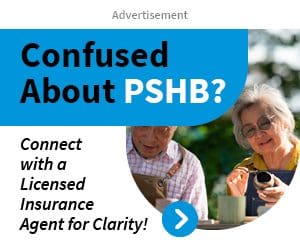Key Takeaways
-
Transitioning to the Postal Service Health Benefits (PSHB) program in 2025 requires thoughtful decision-making, especially regarding Medicare integration and plan selection.
-
Understanding timelines, costs, and coverage options is essential to making informed choices that meet your healthcare needs and budget.
Navigating the PSHB Transition in 2025
As a USPS employee or retiree, you’re facing a significant shift in your healthcare options with the introduction of the Postal Service Health Benefits (PSHB) program. Starting January 1, 2025, this new system replaces the Federal Employees Health Benefits (FEHB) program for postal workers, bringing changes that impact your coverage, costs, and decisions about Medicare. Preparing now can ensure a smooth transition and help you make the best choices for you and your family.
What’s Changing with PSHB?
The PSHB program is a tailored health benefits system specifically designed for USPS employees and retirees. While it shares similarities with FEHB, there are notable differences:
Exclusive to USPS
Unlike FEHB, PSHB exclusively serves USPS employees, retirees, and eligible family members. This allows for customized plans that consider the unique needs of postal workers.
Integration with Medicare
If you’re Medicare-eligible, you must enroll in Medicare Part B to maintain PSHB coverage, with some exceptions for those who retired on or before January 1, 2025. This integration aims to streamline benefits and reduce out-of-pocket costs for enrollees.
Automatic Enrollment
Current FEHB enrollees will be automatically enrolled in a corresponding PSHB plan. While this ensures continued coverage, reviewing your options during the 2024 Open Season (November 11 – December 9, 2024) is crucial to confirm the plan aligns with your healthcare needs.
Key Decisions You Need to Make
Transitioning to PSHB requires careful consideration of several factors. Here’s what you need to evaluate:
1. Choosing the Right Plan
The PSHB program offers a variety of plans with varying coverage levels, premiums, and out-of-pocket costs. Factors to consider include:
-
Healthcare Needs: Evaluate your current and anticipated medical needs, including regular doctor visits, medications, and specialist care.
-
Family Coverage: If covering dependents, ensure the plan accommodates their needs as well.
-
Costs: Review premium, deductible, and coinsurance amounts to find a plan that fits your budget.
2. Deciding on Medicare Enrollment
For Medicare-eligible annuitants and family members, enrolling in Part B is generally required for PSHB. Key considerations include:
-
Costs of Medicare Part B: The standard monthly premium for Part B in 2025 is $185, with an annual deductible of $257. Higher-income individuals may pay adjusted premiums.
-
PSHB Benefits with Medicare: Many PSHB plans offer additional benefits, such as reduced deductibles and out-of-pocket costs, for those enrolled in Medicare.
-
Exemptions: Determine if you’re exempt from the Part B requirement, such as if you retired before the cutoff date.
3. Understanding Prescription Drug Coverage
Medicare-eligible enrollees in PSHB plans will receive prescription drug coverage through a Medicare Part D Employer Group Waiver Plan (EGWP). This includes:
-
$2,000 Out-of-Pocket Cap: Starting in 2025, out-of-pocket costs for prescription drugs are capped annually, eliminating the Medicare “donut hole.”
-
Pharmacy Networks: Confirm your preferred pharmacies participate in the plan’s network.
Preparing for Open Season
The Open Season enrollment period is your opportunity to make changes or select a new PSHB plan. Use this time wisely by:
Reviewing Your Options
Study plan details, including coverage, costs, and benefits. Look for information provided in your Annual Notice of Change (ANOC) letter.
Comparing Plans
Online comparison tools can help you evaluate how plans meet your needs. Focus on factors like premium costs, deductible amounts, and coverage for specialists or medications.
Updating Dependents
Ensure your family members are correctly listed and eligible for coverage under the PSHB program.
Managing Costs Under PSHB
Healthcare costs can be a significant portion of your budget. Here’s how to manage them effectively under PSHB:
Budgeting for Premiums and Deductibles
Plan for monthly premiums and annual deductibles. The PSHB program aims to offer competitive rates, but understanding these costs upfront can prevent surprises.
Maximizing Medicare Benefits
For Medicare enrollees, the integration with PSHB can lead to substantial savings. Take advantage of benefits like premium reimbursements or waived deductibles where offered.
Exploring Preventive Care
Many PSHB plans cover preventive care services at little to no additional cost. Regular check-ups and screenings can catch health issues early, reducing long-term expenses.
How Medicare Integration Works
If you’re transitioning to PSHB and are eligible for Medicare, understanding how the two work together is crucial:
-
Primary and Secondary Coverage: Medicare becomes your primary insurance, and PSHB serves as secondary, covering costs Medicare doesn’t.
-
Prescription Drugs: Your Part D coverage through PSHB ensures seamless access to medications, with protections like the $2,000 out-of-pocket cap.
-
Coordination of Benefits: The integration minimizes gaps in coverage and reduces overall expenses.
Special Considerations for Retirees
As a USPS retiree, you may face unique challenges during this transition:
Understanding Exemptions
If you retired on or before January 1, 2025, you’re exempt from the Medicare Part B enrollment requirement. Consider whether maintaining PSHB without Medicare aligns with your healthcare needs.
Evaluating Long-Term Needs
Post-retirement healthcare costs can increase over time. Review plan options to ensure they provide adequate support for chronic conditions or long-term care.
Keeping Dependents Covered
Ensure your dependents’ coverage transitions smoothly under PSHB. Verify their eligibility and confirm they’re included in your plan.
Timeline for the PSHB Transition
To stay on track during this transition, keep these key dates in mind:
-
November 11 – December 9, 2024: Open Season for selecting or changing your PSHB plan.
-
January 1, 2025: Official start of the PSHB program. Automatic enrollment in a corresponding plan begins.
-
Throughout 2025: Ongoing Medicare Part B enrollment for those becoming eligible during the year.
Final Steps for a Smooth Transition
Transitioning to the PSHB program doesn’t have to be overwhelming. By planning ahead and staying informed, you can make decisions that ensure comprehensive and cost-effective healthcare coverage.
Stay Informed
Regularly check USPS and PSHB communications for updates and resources. These can include webinars, informational booklets, and online tools.
Seek Guidance
If you’re uncertain about your options, consult with a benefits specialist or use online resources to clarify your choices.
Review Annually
Even after transitioning, review your plan annually during Open Season to ensure it continues to meet your needs.
Taking Charge of Your Health Coverage
The transition to the PSHB program is a significant milestone for USPS employees and retirees. By understanding the changes, evaluating your options, and preparing ahead of time, you can navigate this shift with confidence. Don’t wait until the last minute—start reviewing your options today to ensure a seamless transition and the best possible healthcare for you and your family.











